Gochujang Noodles (Spicy Korean Noodles)
Jump to RecipeThese Gochujang noodles are spicy, so simple to make and made with minimal ingredients.
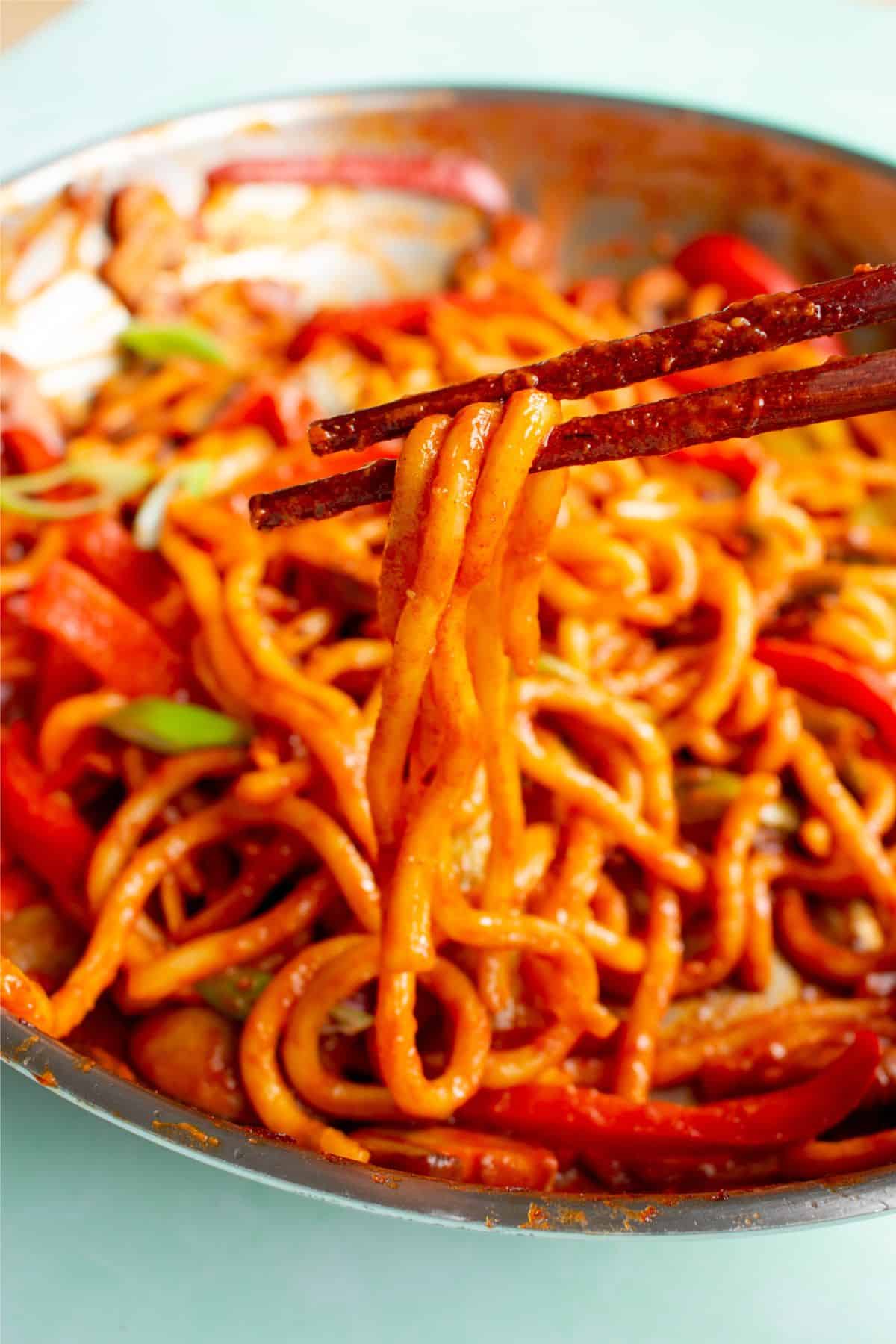
Table of Contents
Why you’ll love this recipe
The spicy Korean noodles come together in under 10 minutes and can be whipped up in one pan, making it the perfect weeknight dinner recipe, or fun lunch if you need something to brighten up your day.
The vibrant red Gochujang paste allows us to get so much flavour, whilst putting in minimal effort. Out of all of the pastes to cook with, Gochujang is my favourite.
So when combined with noodles, I knew this would be a winner. Plus, the udon noodles are cooked within the sauce, meaning that they absorb soo much flavour as they cook.
Other Gochujang recipes to try after this one…Korean Spiced Turkey Mince, Rice and Baked Kale, Korean Spiced Aubergines and Greens and Gochujang Turkey Noodles
What is Gochujang paste?
Gochujang paste is a spicy condiment that originated in Korean cuisine. It is made from red chillies, sticky rice and fermented soybeans and salt, which gives it a sticky texture. Whilst it is spicy, there is also a sweetness to it, which I think attributes to it’s uniqueness.
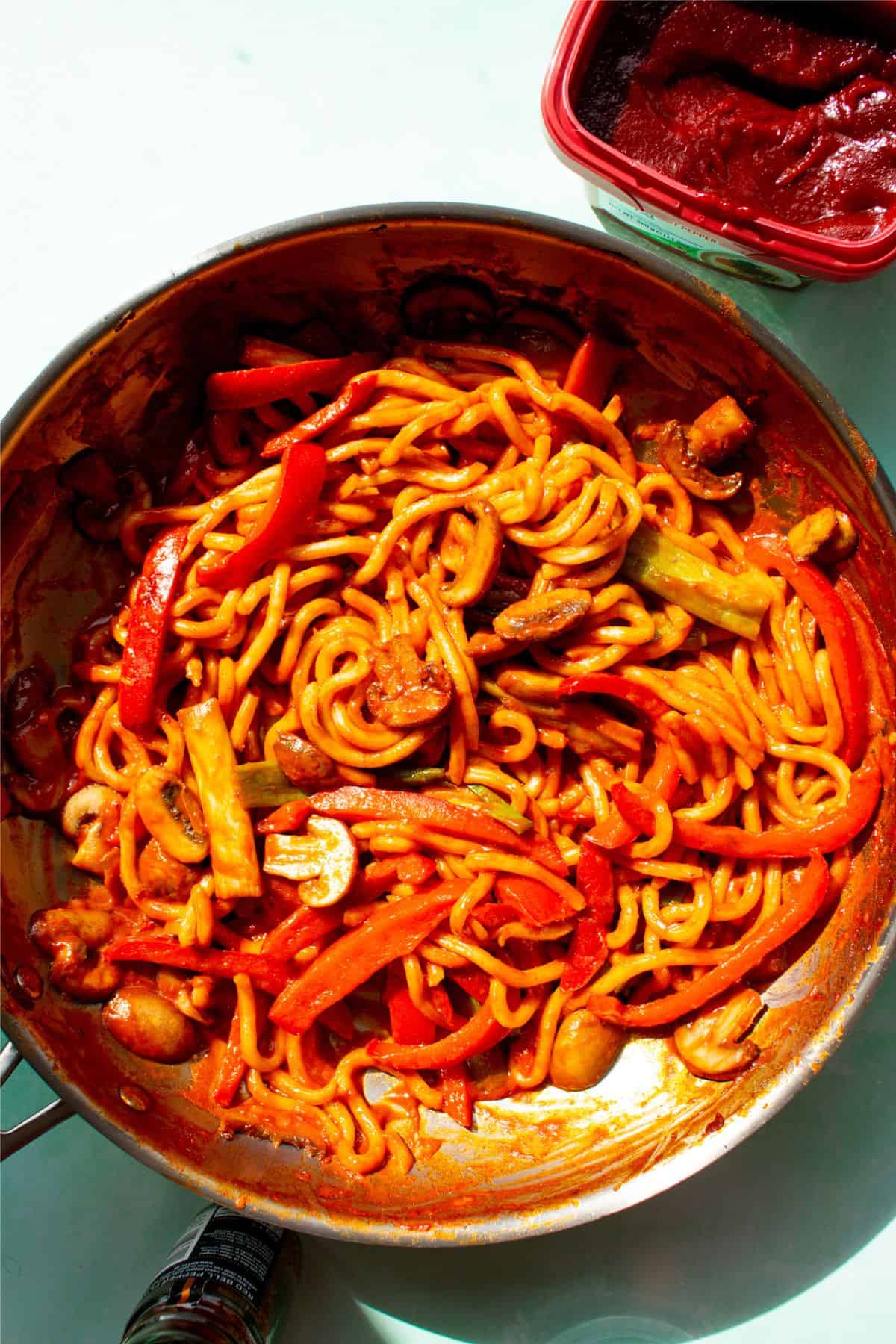
Where can I buy Gochujang Paste
You can find it at most large supermarkets, alternatively you could support your local Asian supermarket, as most will have it. If you’re still struggling to find it, you could buy on Amazon – here’s a link to one of my favourite brands of Gochujang paste.
Ingredients
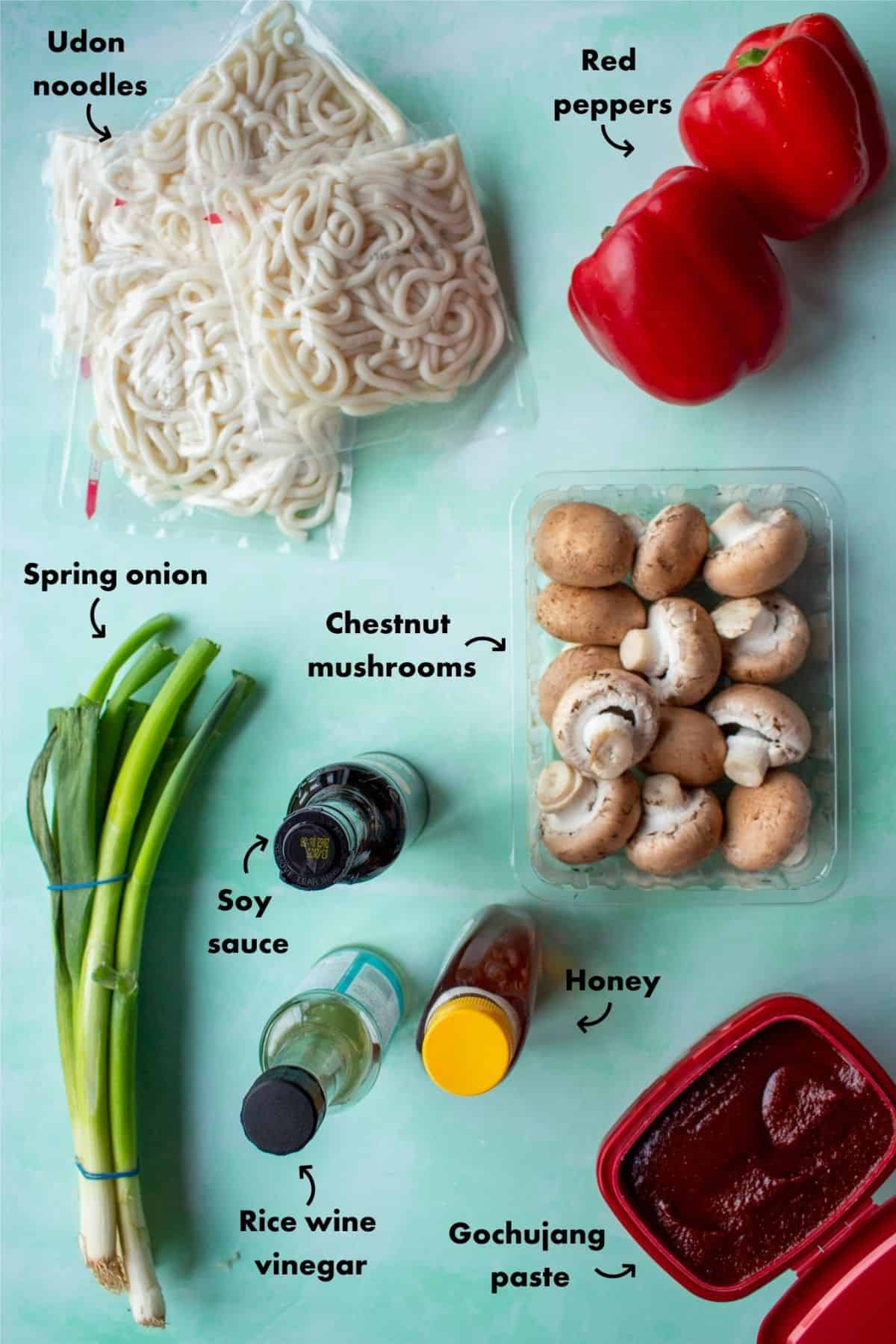
Gochujang Paste
The star of the show. To add spice, sweetness and a rich flavour to these Korean spicy noodles.
Udon Noodles
I’ve chosen these thick noodles as they stir-fry/cook within a small amount of liquid/sauce really well. As they can cook within the sauce, it means they absorb all the amazing flavours from the Gochujang.
Here are some other saucy noodle recipes to try…Chilli Oil Udon Stir Fry, Stir-fry Pork Udon Noodles and Chicken Vermicelli Noodles
Chestnut Mushrooms, Red peppers and Spring onions
The perfect combination ; Umami packed mushrooms, red peppers for nutrients, sweetness and crunch and spring onions as an aromatic and also as a garnish to add crunch.
Soy Sauce and Rice Wine Vinegar
Add soy sauce for a salty, umami boost and rice wine vinegar to balance the sweet/spicy/rich flavours of the Gochujang by adding brightness and acidity. You could substitute the rice wine vinegar with the juice of half a lime, if you don’t have any.
See the recipe card for full information on all ingredients and quantities.
How to make these Gochujang Noodles
- Start by chopping the peppers, mushrooms and spring onion (Image 1).
- Then allow for the pan to preheat with the rapeseed oil, before adding the spring onion, red pepper and mushrooms. Stir-fry on a high heat for around 5 minutes, constantly stirring. Reduce the heat to medium/low and season the veggies with salt (Image 2).
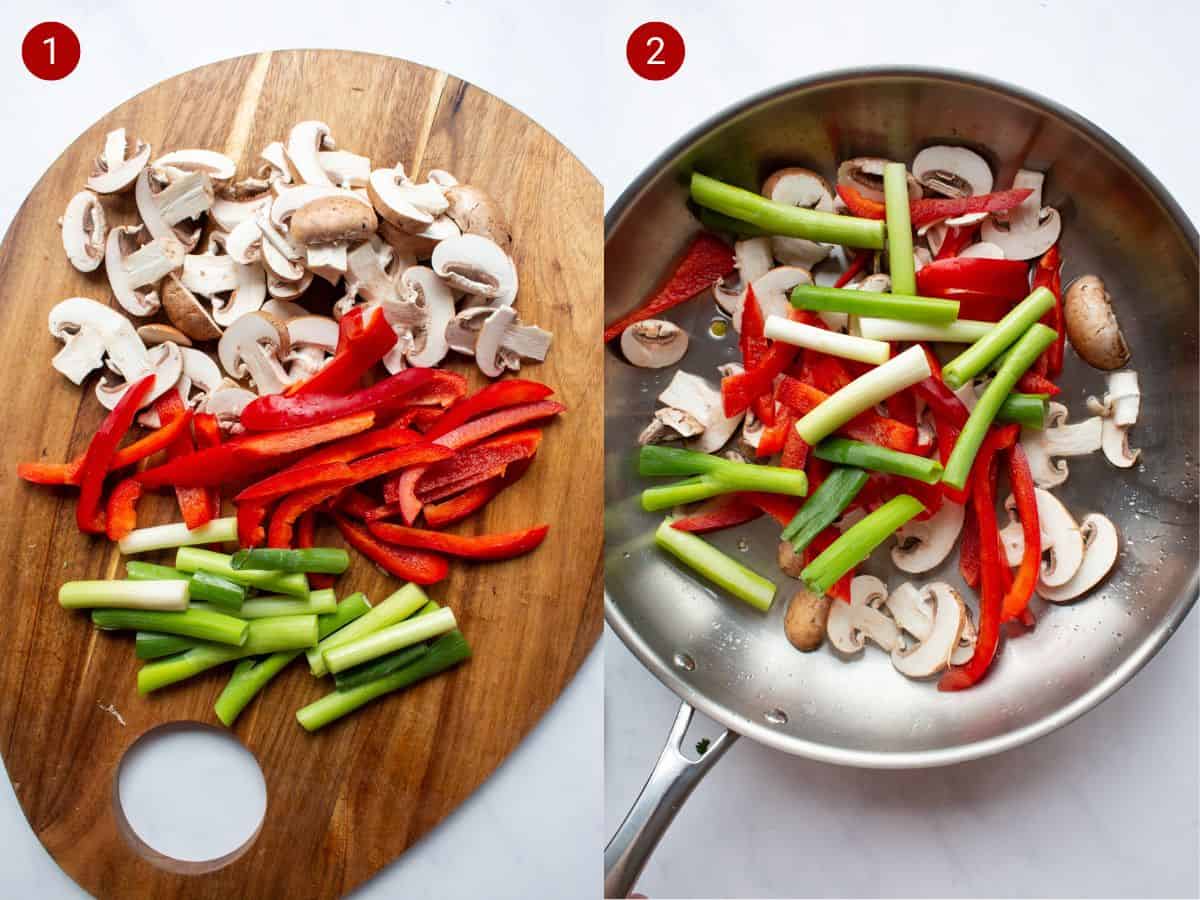
3. Stir-fry on a high heat for around 5 minutes, constantly stirring. Reduce the heat to medium/low and season the veggies with salt (Image 3).
4. Meanwhile, add the Gochujang paste, soy sauce and rice wine vinegar to a bowl (Image 4).
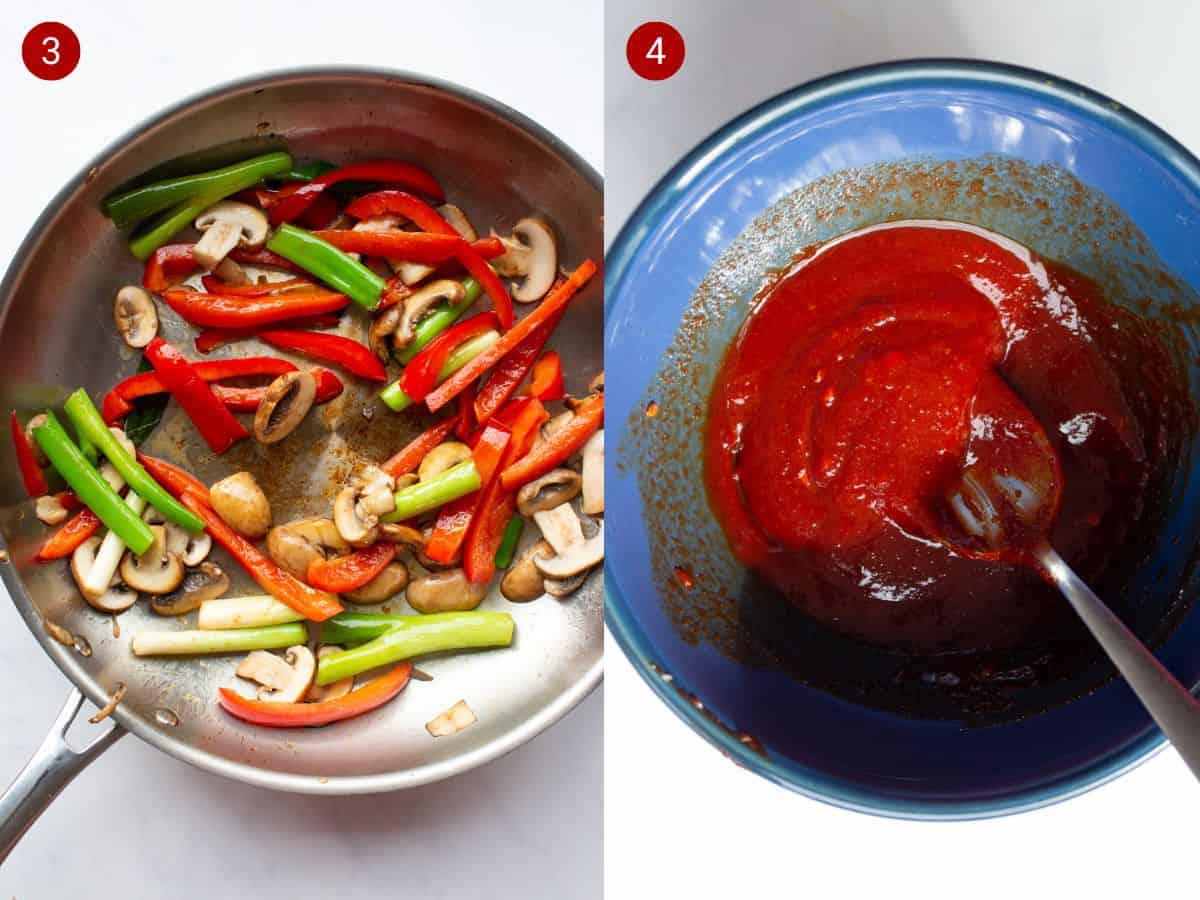
5. Then add the chicken/veggie stock and mix together in the bowl (Image 5).
6. Then add the Gochujang/stock mix and garlic to the pan with the fried peppers, mushrooms and spring onions and stir to combine (Image 6).
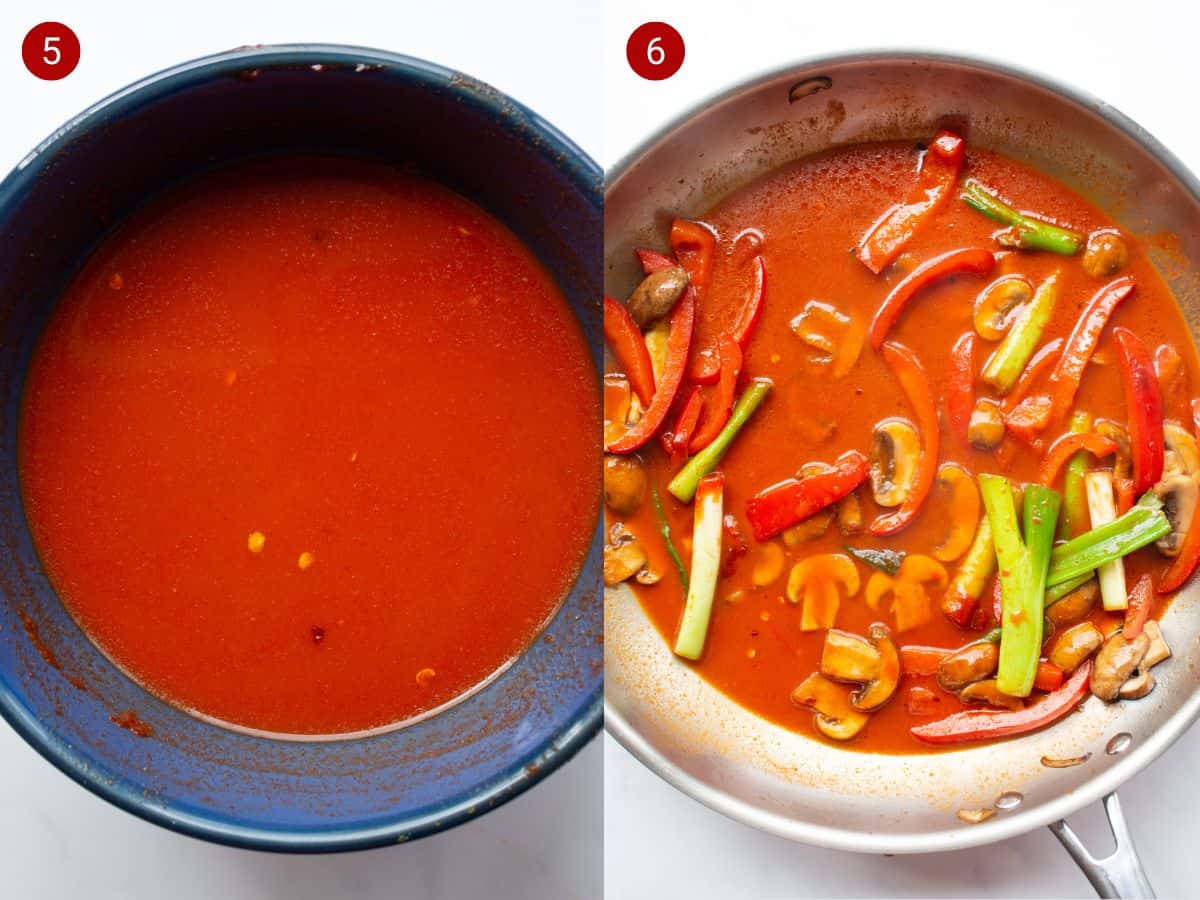
7. Place the udon noodles into the pan. Cover with a lid for 2 minutes as this will allow the noodles to loosen, before you try to move them (Image 7).
8. Remove the lid and stir the noodles into the sauce. Continue to cook for around 3 minutes, until the sauce has thickened/reduced and the noodles are cooked. Top with the reserved thinly sliced spring onion and enjoy! (Image 8).

Tips and Tricks
- Choose noodles that have a chewy texture to complement the Gochujang sauce, for example udon, ramen, or even spaghetti.
- Cook the noodles until al dente: Follow the instructions on the noodle package and cook the noodles until they are just slightly undercooked. This will prevent them from becoming too soft when mixed with the sauce.
- Add lots of vegetables to enhance the dish flavours, such as bell peppers, mushrooms, cabbage, spring onions, pak choi and aubergine.
Here are some other vegetarian recipes to try; Vegetable Paella, Miso Aubergines with Edamame Beans and Brown rice and Tortellini Pasta Salad
Recipe FAQs
I’d say the spice level is on the upper end of mild, but it all depends on how much you use. With my Gochujang noodles recipe, I use quite a lot, as I want the saucy noodles to be rich, spicy and vibrantly red. If you’re worried about the heat, use half the amount of Gochujang paste and slowly add it to the noodles, until you get your preferred spice level.
This recipe is great for making ahead of time/meal prepping. Like many saucy foods, the Gochujang noodles flavour intensifies over time, so you don’t need to worry about any flavour loss.
What can happen though is the noodles can dry out slightly, so to reheat, add a couple of tbsp of water into a pan for each portion. Cook on a medium heat for around 2 minutes, adding another tbsp of water as necessary. Top with freshly sliced spring onions and enjoy.
You sure can. Freeze for up to 3 months. To defrost, leave to thaw in the fridge overnight and reheat using the instructions above.
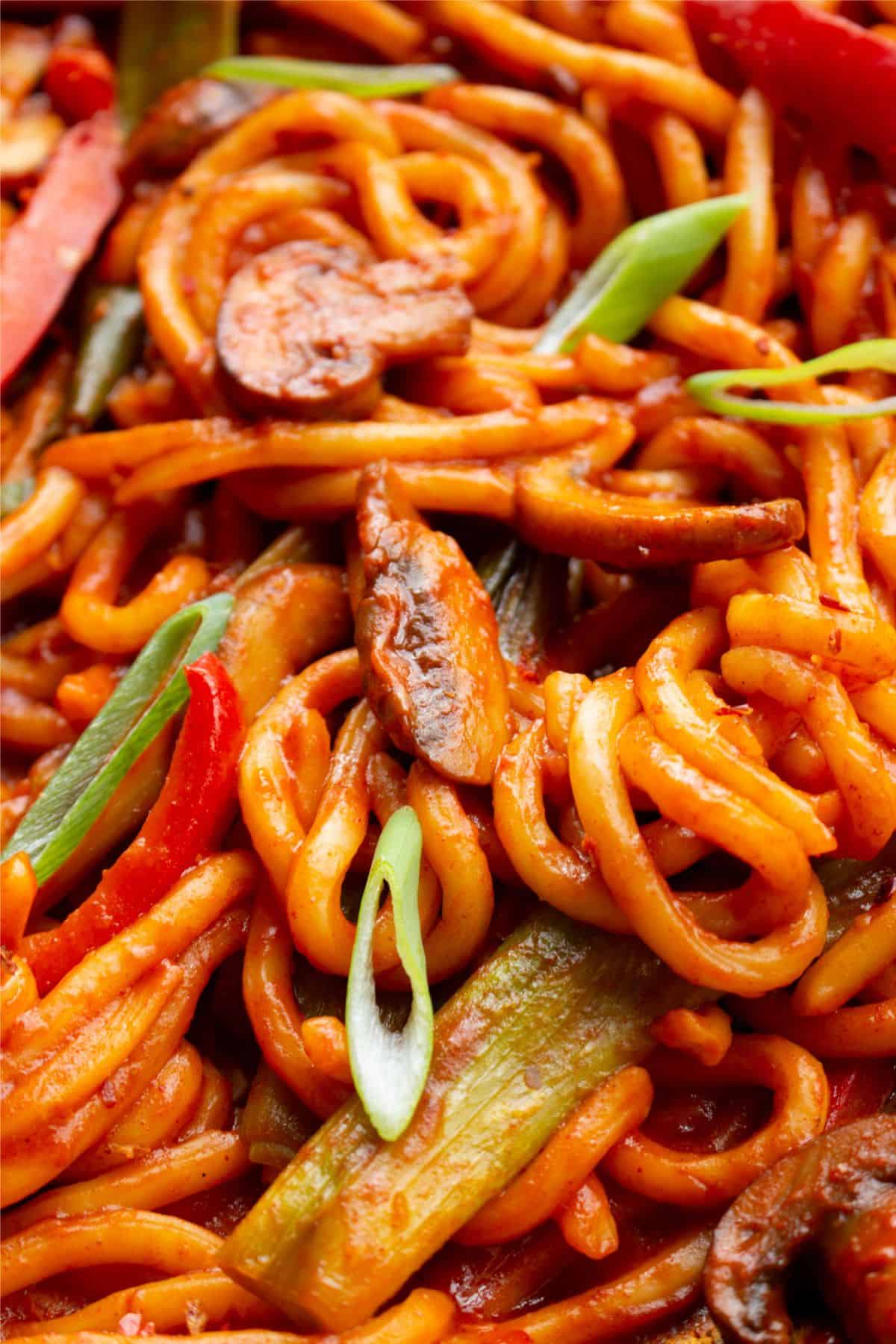
If you tried this Gochujang Noodles recipe, it would be mean so much to me if you could leave a review & a star rating to let me know how you found it! I love hearing about your experiences – it motivates me to keep creating more and more recipes for you guys 💛 Let’s get cooking! – Mimi x
Gochujang Noodles (Spicy Korean Noodles)
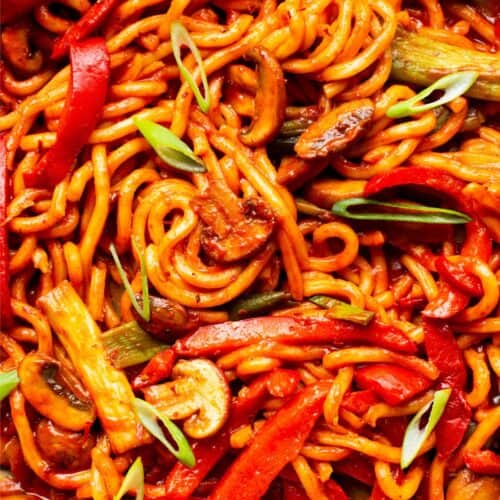
Ingredients
- 50 g spring onion, sliced into thirds, some reserved for garnish (£0.40)
- 1 red pepper, thinly sliced (£0.50)
- 250 g chestnut mushrooms, thinly sliced (£0.95)
- 4 tbsp Gochujang paste (£2.79/10)=(£0.28)
- 600 g (1 ½ packs) Udon Japanese Style Noodles (£0.95x2 =(£1.80)
- 3 cloves garlic, minced (£0.75/3)=(£0.25)
Cupboard Essentials
- 2 tbsp soy sauce
- 1 tbsp rice wine vinegar
- 1.5 tbsp rapeseed oil
- 150 ml chicken stock/veggie stock
Method
- Start by adding the rapeseed oil to a large/deep frying pan on a high heat. Allow for the pan to preheat, then add the spring onion, red pepper and mushrooms into the pan.
- Stir-fry on a high heat for around 5 minutes, constantly stirring.
- Meanwhile, combine the gochujang, soy sauce, honey, rice wine vinegar and chicken/veggie stock in a bowl.
- Reduce the heat to medium/low and season the veggies with salt. Add the gochujang/stock mix and garlic into the pan and stir to combine.
- Place the udon noodles into the pan and cover with a lid for 2 minutes. This will allow the noodles to loosen before you try to move them.
- Remove the lid and stir the noodles into the sauce. Continue to cook for around 3 minutes, until the sauce has thickened/reduced and the noodles are cooked.
- Top with the reserved thinly sliced spring onion and enjoy!
Notes
- Choose chewy-textured noodles like udon, ramen, or spaghetti to pair with Gochujang sauce.
- Cook the noodles until al dente to maintain a firm texture when combined with the sauce.
- Enhance the dish by adding different vegetables such as bell peppers, mushrooms, cabbage, spring onions, pak choi, and aubergine.
Nutrition
Leave a comment and a rating!

- Weekly meal plans with a £20 budget
- 150+ exclusive recipes
- Personal dashboard
- Exclusive step by step videos
- Shopping list tools
- Advert Free experience

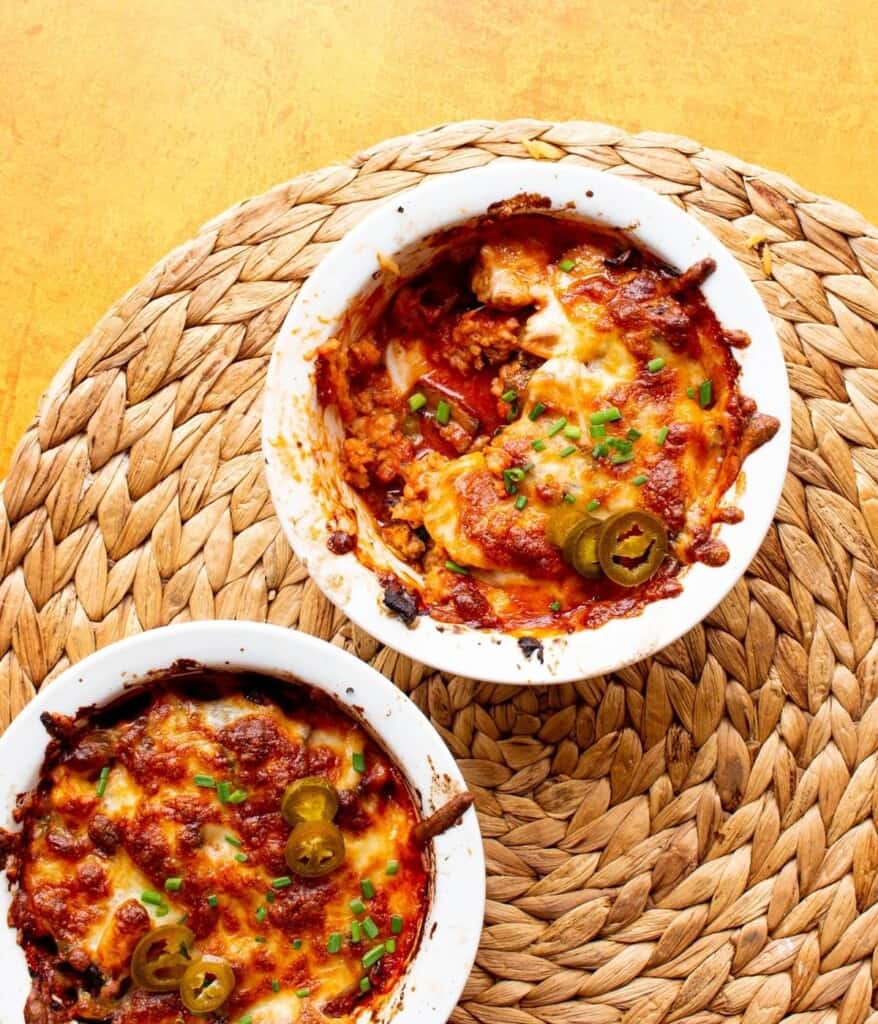
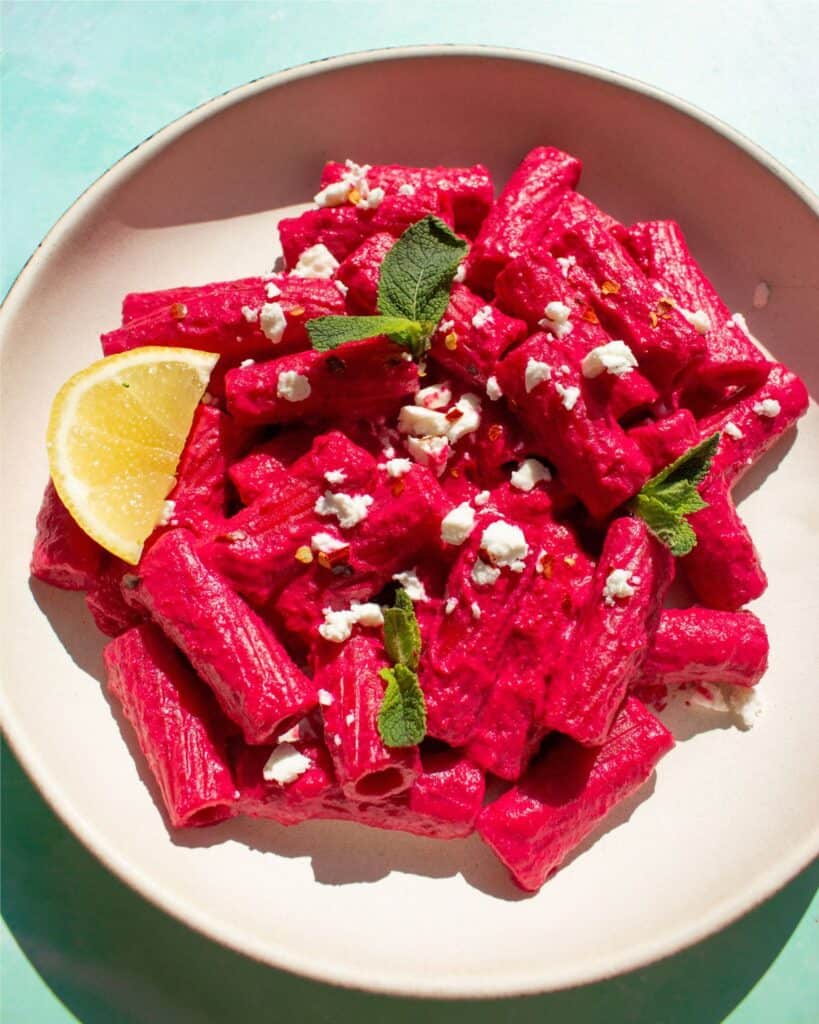

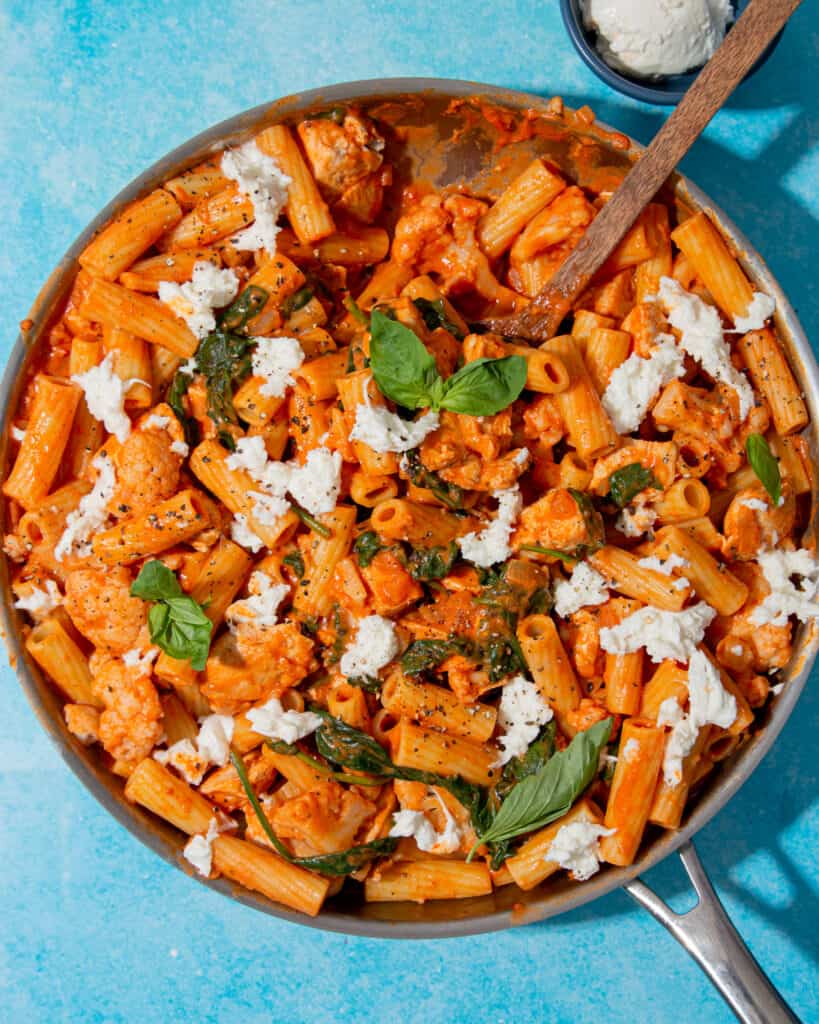

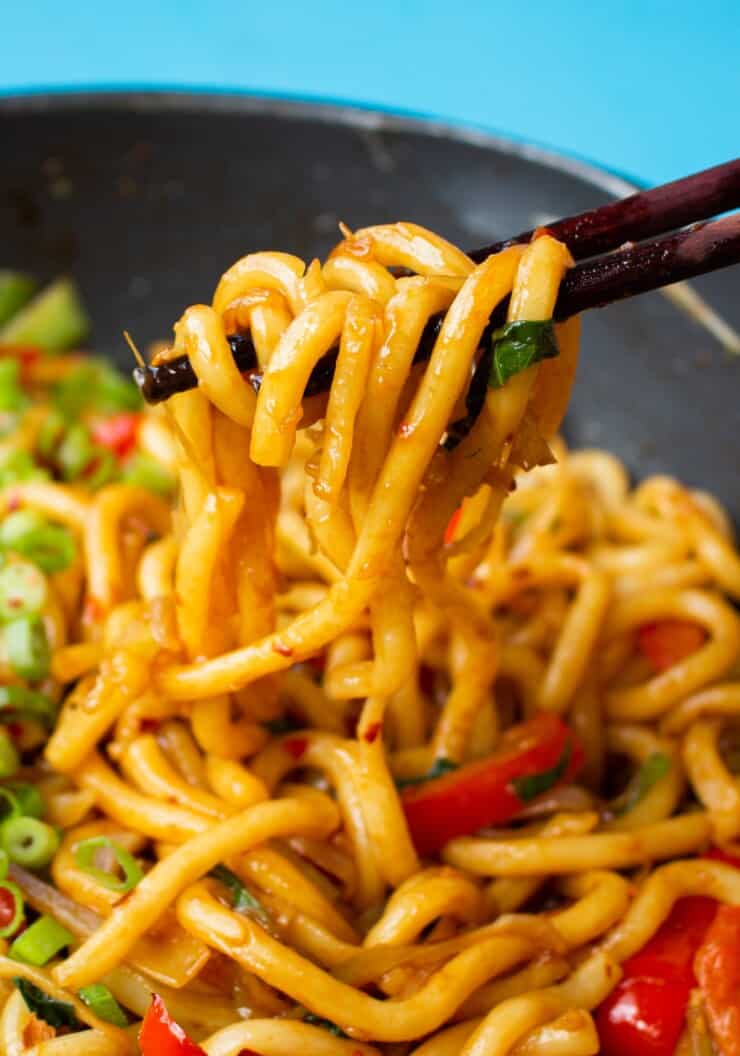
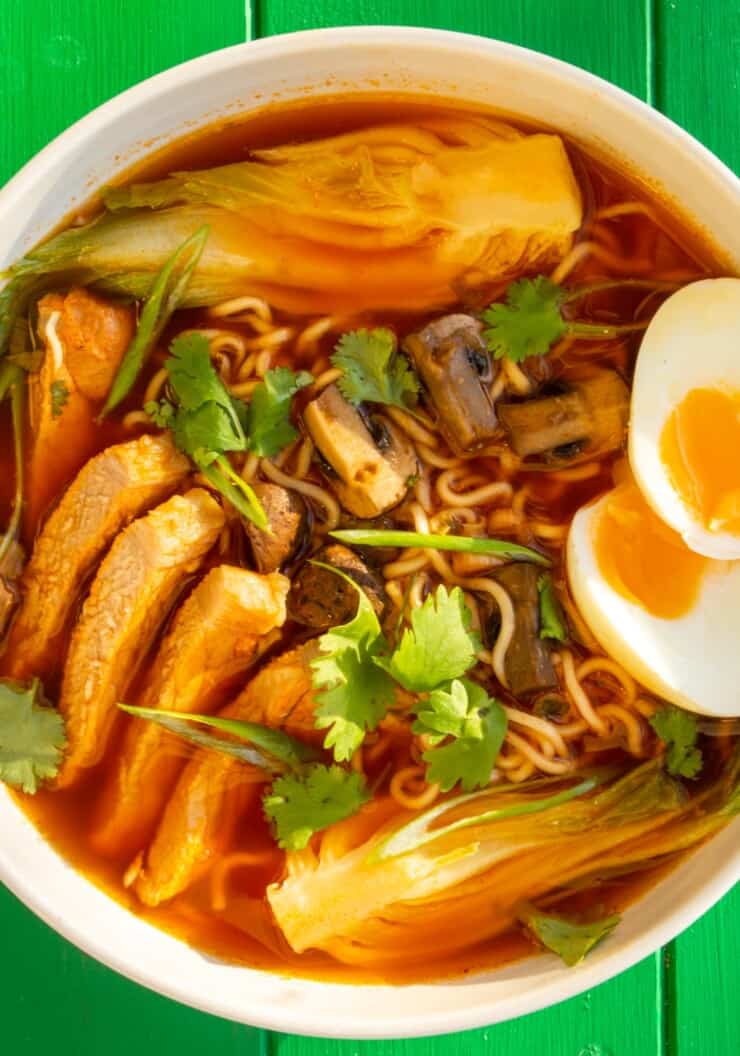
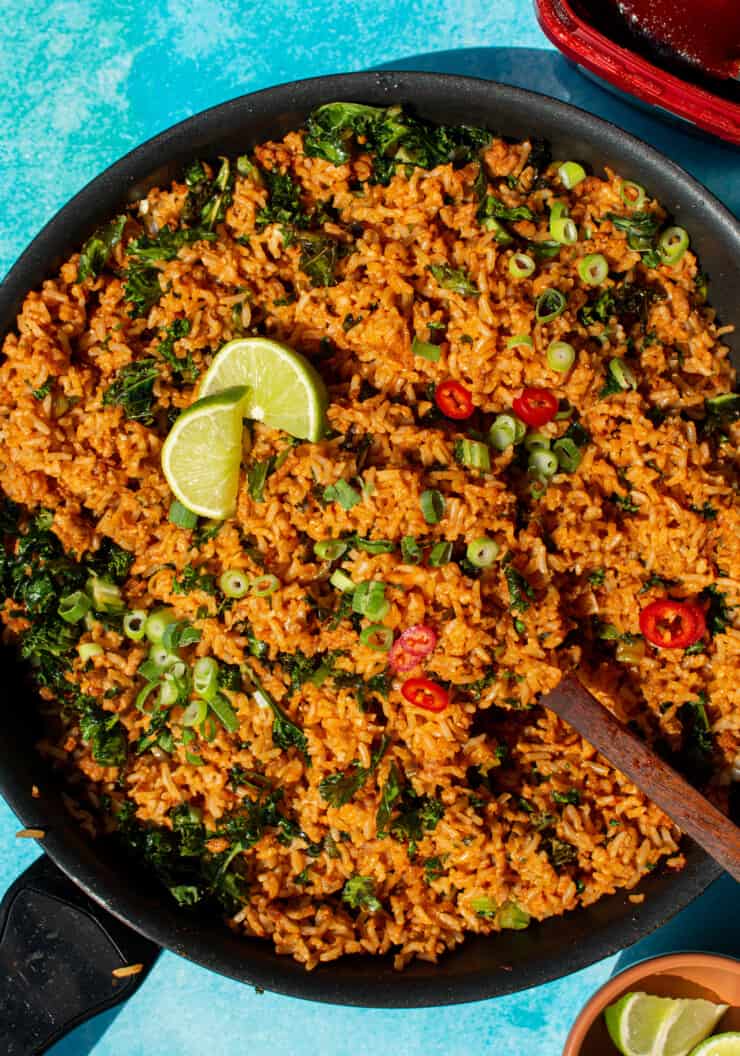
Comments